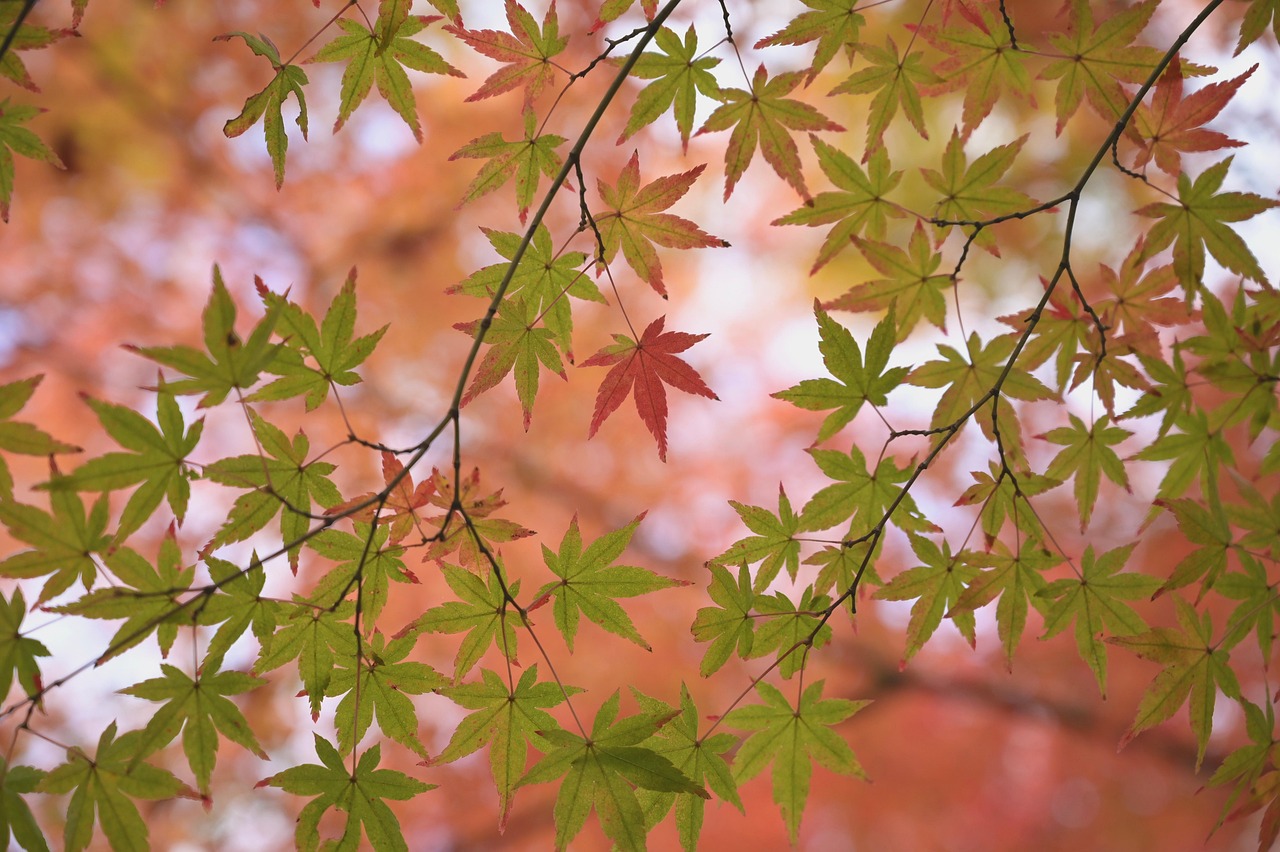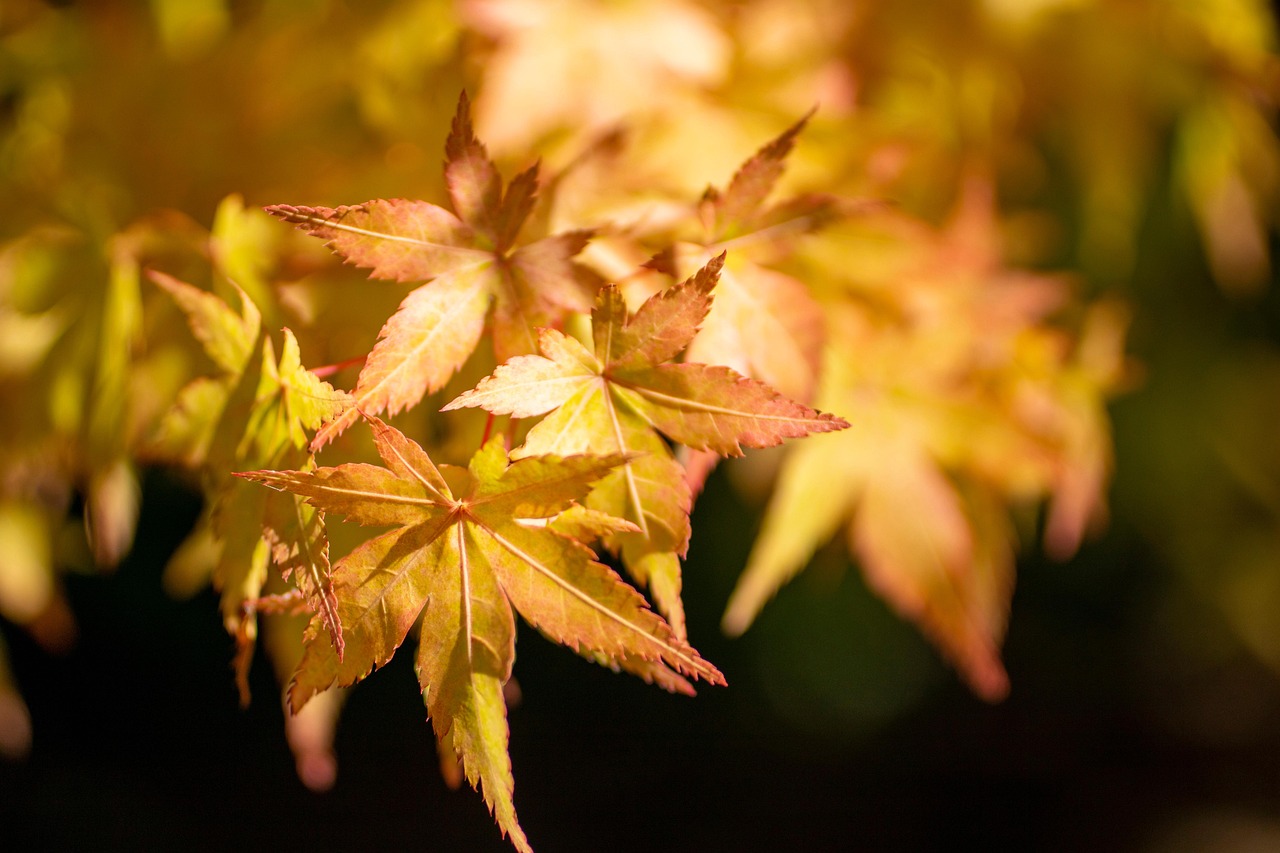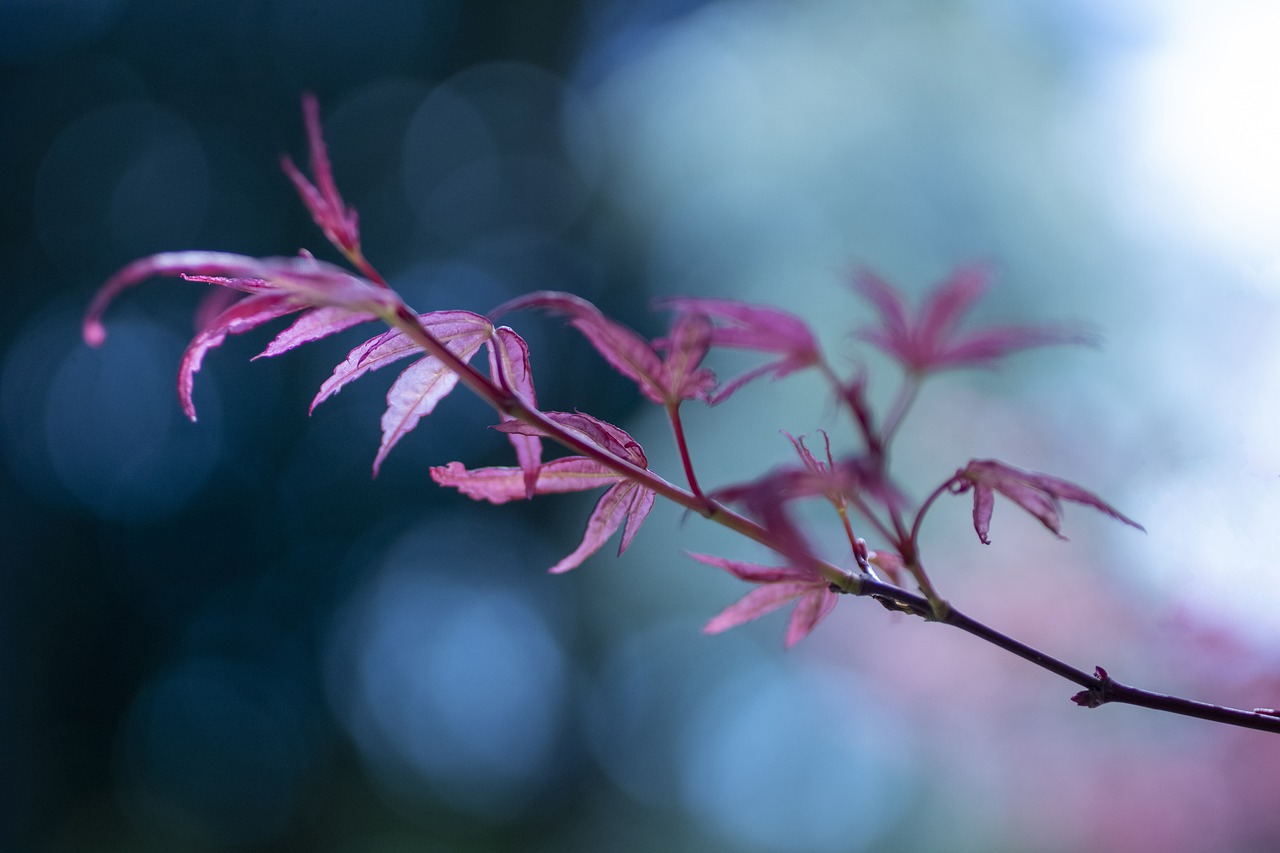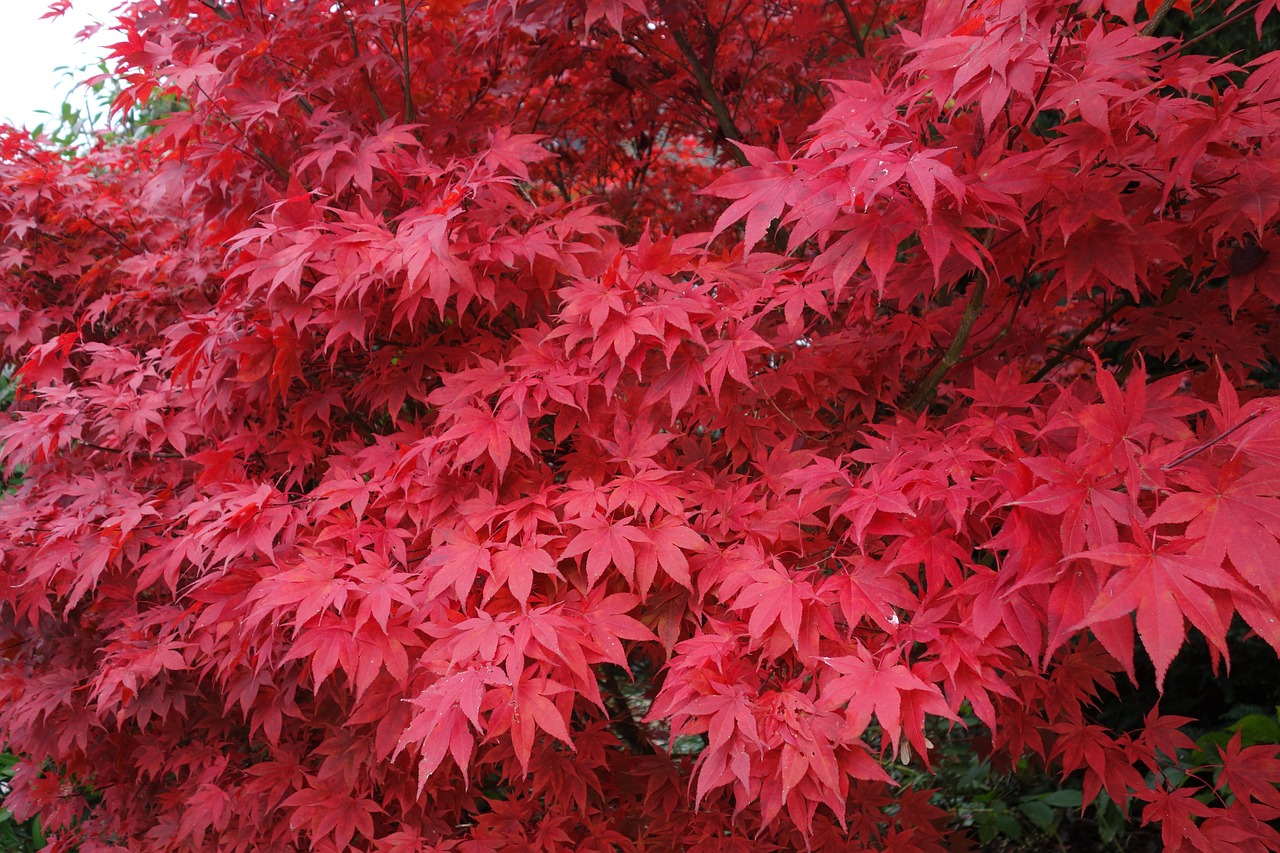Your red Japanese maple tree may turn green due to various factors such as insufficient sunlight, nutrient deficiencies, or genetic variations. Identifying the cause is essential for taking the right steps to restore its vibrant color.
The red Japanese maple, known scientifically as Acer palmatum, is cherished for its stunning foliage and graceful form. These trees are popular in gardens and landscapes due to their vibrant red leaves that add a splash of color throughout the growing season. However, many gardeners encounter a common issue: their once-red Japanese maples start to turn green. This change can be concerning, as it may indicate underlying problems with the tree’s health or care.
Understanding why your red Japanese maple has shifted from its striking red hue to green requires some examination of environmental conditions, care practices, and even the tree’s genetic makeup. Each of these factors plays a role in the color and vibrancy of the leaves. Below are some key considerations that can help you determine the cause of this color change.
Factors Contributing to Color Change

There are several reasons your red Japanese maple may turn green. By exploring these factors, you can better understand how to address the issue and restore your tree’s health. Here are some common causes:
- Insufficient Sunlight: Japanese maples thrive in partial shade to full sun. If your tree is not receiving enough sunlight, it may not produce the pigments necessary for its red coloration.
- Nutrient Deficiencies: A lack of essential nutrients, particularly nitrogen or magnesium, can affect leaf coloration. Nutrient deficiencies can lead to poor growth and color loss.
- Genetic Variations: Some varieties of red Japanese maples may naturally produce more green leaves than others, especially as they mature.
- Environmental Stress: Factors such as drought, extreme temperatures, or pest infestations can stress the tree and impact its leaf color.
- Overwatering: Excessive moisture can lead to root problems, affecting overall health and causing the leaves to lose their vibrant color.
Understanding these factors helps in diagnosing the problem effectively. Let’s look deeper into each cause and how they can be addressed.
Insufficient Sunlight
One of the most common reasons for a red Japanese maple turning green is insufficient sunlight. These trees require at least six hours of direct sunlight per day to maintain their vibrant red color. If your tree is planted in a shaded area or if surrounding plants have grown too tall, they may be blocking sunlight. In such cases, consider relocating the tree or trimming back nearby plants to allow more light to reach it.
Nutrient Deficiencies
Nutrient deficiencies can significantly affect the health of your red Japanese maple. A deficiency in nitrogen, for instance, can lead to poor leaf development and color loss. Magnesium deficiency is also known to cause chlorosis, which makes leaves appear yellow or green. To address these issues, consider performing a soil test to determine nutrient levels. Based on the results, you can amend the soil with organic fertilizers or specific nutrients that promote healthy growth.
Genetic Variations
Some varieties of red Japanese maples are genetically predisposed to produce green leaves as they mature. Factors such as weather conditions and seasonal changes may also influence this. If your tree is a younger specimen, it may gradually develop more vibrant colors as it ages. In this case, patience is key while ensuring proper care throughout its growth.
Environmental Stress
Environmental stressors such as drought or extreme temperatures can negatively impact your tree’s health and coloration. Japanese maples are sensitive to both heat and cold. During prolonged dry spells, ensure your tree receives adequate watering without over-saturating the soil. Additionally, protect it from harsh winds or severe weather conditions by providing shelter or windbreaks.
Overwatering
While it is crucial to keep your red Japanese maple well-watered, overwatering can lead to root rot and other issues that affect foliage color. Make sure your tree is planted in well-draining soil. If you suspect overwatering, allow the soil to dry out before watering again and consider adjusting your watering schedule based on seasonal rainfall.
By addressing these common issues, you can help your red Japanese maple regain its stunning color. Each factor requires careful consideration and appropriate action to ensure the health of your tree. As you explore these causes and fixes, remember that maintaining a healthy environment will contribute significantly to your tree’s beauty and longevity.
Preventive Measures for Healthy Foliage
To ensure your red Japanese maple maintains its vibrant color, it is essential to adopt preventive measures. These practices not only enhance the tree’s appearance but also promote its overall health. Here are some strategies to consider:
- Proper Planting Location: Choose a location where the tree can receive adequate sunlight while being protected from harsh winds. Consider the surrounding landscape to avoid shading.
- Soil Quality: Use well-draining soil rich in organic matter. Incorporating compost can improve soil quality and provide essential nutrients.
- Regular Fertilization: Apply a balanced fertilizer in early spring. This will provide the necessary nutrients for growth and color maintenance. Look for fertilizers specifically formulated for maples.
- Consistent Watering Schedule: Establish a consistent watering routine, especially during dry periods. Monitor the moisture levels in the soil to prevent both under and overwatering.
- Pest Control: Regularly check for signs of pests like aphids or spider mites. Implement pest control measures promptly to prevent damage to the foliage.
Understanding Leaf Color Changes Throughout the Seasons
It is important to recognize that leaf color changes can vary throughout the seasons. These changes may not always indicate a problem with your red Japanese maple. Understanding these variations can help you manage your expectations and care routine effectively.
In spring, many red Japanese maples produce leaves that start as bright red or purple. As temperatures rise during summer, the leaves may transition to a greener shade due to increased chlorophyll production. This process is normal and can depend on factors such as species, sunlight exposure, and weather conditions.
Seasonal Color Variations
Below is a brief overview of what to expect from your red Japanese maple throughout the seasons:
| Season | Leaf Color | Notes |
|---|---|---|
| Spring | Bright Red/Purple | New growth emerges in vibrant colors. |
| Summer | Green or Variegated | Chlorophyll production increases; colors may fade. |
| Fall | Vibrant Reds/Oranges | Foliage turns stunning shades as temperatures cool. |
| Winter | Bare Branches | Tree enters dormancy; focus on root health. |
Being aware of these seasonal changes helps you appreciate your tree’s natural cycle. It also assists in determining whether a shift in color is due to environmental stressors or is simply part of its growth pattern.
The Role of Genetics in Leaf Color
The genetic makeup of your red Japanese maple plays a significant role in its leaf color and overall appearance. Different cultivars exhibit various tendencies regarding color retention. It is essential to identify the specific variety you have planted, as some may be more prone to green foliage under certain conditions than others.
For example, cultivars like ‘Bloodgood’ are known for their striking red leaves, while others may have more variable coloration. Understanding your tree’s genetic background allows for better care decisions tailored to its needs.

Popular Cultivars of Red Japanese Maple
- ‘Bloodgood’: Known for its deep red leaves that hold their color well throughout the summer.
- ‘Atropurpureum’: Features vibrant reddish-purple leaves in spring that may fade slightly in summer.
- ‘Emperor I’: Offers consistent deep red foliage with excellent color retention.
- ‘Crimson Queen’: A weeping variety with stunning red leaves that maintain their color longer than many others.
By understanding these cultivars, you can better manage your expectations regarding leaf color and make informed decisions about care practices that may enhance their vibrancy.
Common Pests Affecting Red Japanese Maples
In addition to environmental factors and genetic variations, pests can also play a significant role in the health of your red Japanese maple. Various insects may infest your tree, leading to discoloration or stress that can manifest as green leaves. Identifying these pests early and implementing control measures is crucial for maintaining the tree’s health.
Identifying Common Pests
Below are some of the most common pests that may affect red Japanese maples:
- Aphids: These small, soft-bodied insects feed on sap from leaves and stems. Infestations can cause leaves to curl and discolor, leading to a loss of vibrancy.
- Spider Mites: These tiny arachnids are often found on the undersides of leaves. They create fine webbing and can cause stippling or yellowing of the foliage.
- Scale Insects: Scale insects attach themselves to the bark or leaves, sucking sap and weakening the tree. They can appear as small, raised bumps on the surface of the plant.
- Japanese Beetles: These beetles feed on the foliage, leaving behind skeletonized leaves. This damage can lead to stress and potential color changes.
Pest Control Strategies
Effective pest control strategies are essential for protecting your red Japanese maple. Here are some methods you can use:
- Regular Inspections: Regularly check your tree for any signs of pests. Early detection can make management easier.
- Natural Predators: Encourage beneficial insects like ladybugs and lacewings, which prey on aphids and other pests.
- Insecticidal Soap: Use insecticidal soap or horticultural oil to treat infestations. These products can help eliminate soft-bodied insects without harming beneficial species.
- Neem Oil: Neem oil is a natural pesticide that can deter various pests and prevent further infestations.
- Cultural Practices: Maintain tree health through proper watering, fertilization, and pruning to reduce stress and susceptibility to pests.
Environmental Conditions Impacting Leaf Color

The environmental conditions surrounding your red Japanese maple can significantly impact leaf coloration. From soil moisture to temperature fluctuations, various factors contribute to how your tree appears throughout the year.
Soil Moisture and Drainage
The type of soil and its moisture content play a vital role in your tree’s health. Well-draining soil is essential for preventing root rot and ensuring proper nutrient uptake. Overly saturated soil can lead to stress, which may result in color changes in the leaves.
Consider implementing the following practices to improve soil moisture levels:
- Amend Soil: Incorporate organic matter such as compost to enhance drainage and nutrient retention.
- Avoid Compaction: Prevent soil compaction around the root zone by avoiding heavy foot traffic or equipment near the base of the tree.
- Mulching: Apply a layer of mulch around the base of the tree to retain moisture while suppressing weeds that compete for nutrients.
Temperature Sensitivity
Japanese maples are sensitive to temperature extremes. Sudden changes in temperature can stress the tree, impacting leaf color. For instance, late frosts in spring can damage new growth, causing leaves to lose their vibrant colors.
To mitigate temperature-related issues, consider the following tips:
- Choosing the Right Location: Plant your tree in a sheltered spot that protects it from harsh winds and extreme temperature fluctuations.
- Winter Protection: In colder climates, provide winter protection using burlap wraps or mulch around the base to insulate roots from freezing temperatures.
The Importance of Pruning
Proper pruning is essential for maintaining the health and aesthetics of your red Japanese maple. Regular pruning encourages healthy growth, improves air circulation, and enhances light penetration, all of which can positively affect leaf color.
Pruning Techniques
Here are some effective pruning techniques specifically for red Japanese maples:
- Timing: Prune during late winter or early spring before new growth begins. This timing reduces stress on the tree and encourages healthy foliage.
- Selective Pruning: Focus on removing dead or crossing branches to improve airflow and light exposure to the center of the tree.
- Avoid Heavy Pruning: Avoid excessive pruning, as this can lead to shock and disrupt the natural growth patterns of the tree.
By understanding how environmental conditions, pests, and proper pruning techniques influence your red Japanese maple’s health and color, you can take proactive steps to ensure its vitality. Through careful observation and management, your tree can thrive and maintain its stunning appearance throughout the seasons.
Additional Considerations for Healthy Japanese Maples

In addition to the previously mentioned factors, there are several other considerations that can impact the health and appearance of your red Japanese maple. Paying attention to these aspects can help you create an environment where your tree can thrive and maintain its vibrant color.
Climate Adaptability
Japanese maples are native to Japan, Korea, and China, where they experience a temperate climate. Understanding how your local climate affects your tree is crucial. If you live in an area with extreme temperatures, consider the following:
- Hardiness Zones: Familiarize yourself with the USDA hardiness zones to ensure your tree is suitable for your region.
- Microclimates: Be aware of microclimates in your landscape. Areas near walls or buildings may experience different temperatures than open spaces.
- Seasonal Changes: Monitor seasonal changes and adjust your care practices accordingly to prevent stress during extreme weather conditions.
Companion Planting
Choosing the right plants to grow alongside your red Japanese maple can enhance its health and appearance. Companion planting can reduce competition for resources while highlighting the beauty of your tree. Consider planting:
- Low-Growing Perennials: Plants like hostas or ferns can thrive in partial shade and won’t compete aggressively for nutrients.
- Bulbs: Spring bulbs such as daffodils or snowdrops can provide seasonal interest without hindering the maple’s growth.
- Ground Covers: Varieties like creeping thyme or ajuga can help retain soil moisture and suppress weeds.
Monitoring for Diseases
In addition to pests, red Japanese maples can be susceptible to diseases that may affect their health and color. Common diseases include:
- Verticillium Wilt: This fungal disease causes leaves to wilt and drop prematurely. Proper watering and soil health are essential for prevention.
- Leaf Spot: Various fungi can lead to leaf spots, which may reduce the overall vigor of the tree. Good air circulation and prompt removal of infected leaves can help.
- Root Rot: Often caused by overwatering, root rot can lead to yellowing leaves and a decline in health. Ensure proper drainage to avoid this issue.
Regularly inspect your tree for any signs of disease and take action as needed to prevent further spread.
Final Thoughts
Your red Japanese maple is a stunning addition to any landscape, offering beauty and character throughout the year. Understanding the factors that contribute to its leaf color and overall health is essential for maintaining its vibrant appearance. From environmental conditions to pest management, each element plays a vital role in ensuring your tree thrives.
By providing adequate sunlight, ensuring proper watering practices, and monitoring for pests and diseases, you can help your red Japanese maple flourish. Remember that seasonal changes are also a natural part of the tree’s growth cycle, and some variations in color may be expected.
Additionally, implementing preventive measures such as proper planting location, soil health improvement, and companion planting can significantly enhance your tree’s vitality. Through careful observation and proactive care, you will enjoy a beautiful, healthy red Japanese maple that maintains its stunning color all year round.
In conclusion, with the right knowledge and techniques, you can successfully manage your red Japanese maple’s health and appearance, ensuring it remains a cherished centerpiece in your garden for years to come.
